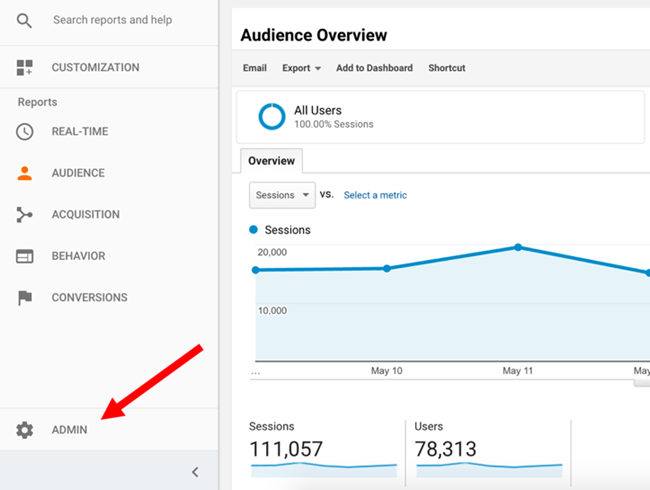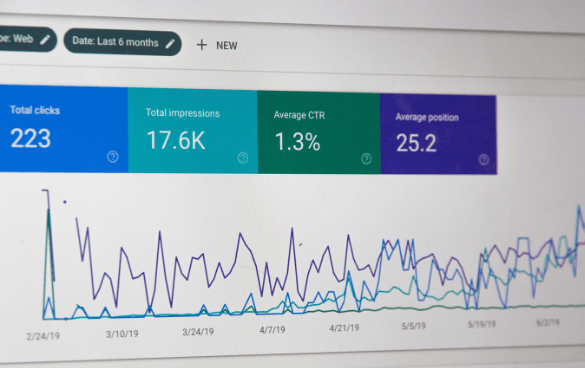Step-by-Step Tutorial: Remarketing In Google Analytics
Step-by-Step Tutorial: Remarketing In Google Analytics
Blog Article
Maximize Your ROI With Remarketing in Google Analytics
In the realm of digital advertising, the utilization of remarketing methods within Google Analytics has actually proven to be a potent tool for boosting roi. By harnessing the power of user information and tailoring advertisements to specific audience sections, businesses can significantly amplify their conversion rates. Nonetheless, the actual vital lies in the art of precision - understanding individual behavior, crafting compelling ads, and continuously refining approaches to drive optimal results. The journey to making best use of ROI via remarketing is a nuanced path paved with understandings and opportunities that can improve the trajectory of your advertising and marketing ventures.
Understanding Remarketing in Google Analytics
Comprehending remarketing in Google Analytics is vital for optimizing your electronic advertising and marketing method. Remarketing enables you to target users that have actually previously seen your site or engaged with your app, providing them with customized advertisements as they browse various other sites or utilize various other applications within the Google Display Network. This method assists maintain your brand top of mind and encourages users to go back to your site, eventually raising the likelihood of conversion.
By utilizing Google Analytics, you can track the performance of your remarketing projects, gaining useful understandings into individual behavior, interaction, and conversions. This information allows you to improve your bidding process, messaging, and targeting techniques to improve the total efficiency of your projects.
Furthermore, recognizing the various kinds of remarketing lists readily available in Google Analytics, such as typical, vibrant, and comparable audiences, enables you to create personalized and highly segmented projects customized to certain user segments. This degree of granularity can substantially boost the relevance and influence of your remarketing efforts, ultimately maximizing your roi.
Establishing Remarketing Checklists
To properly carry out remarketing projects in Google Analytics, the first step entails configuring and developing remarketing listings targeting particular individual sectors based upon their communications with your internet site or app. By establishing up remarketing lists, you can customize your marketing efforts to get to individuals who have currently shown interest in your products or solutions.
To begin, navigate to the Admin section of your Google Analytics account and pick the Building where you desire to produce the remarketing checklist. After that, under the Home column, click 'Audience Definitions' and pick 'Target markets.' Next, click on the red 'New Target market' switch and pick 'Develop New' to define the specifications for your remarketing list.

Crafting Reliable Remarketing Advertisements

When crafting your ads, concentrate on producing eye-catching headings and engaging visuals that stand out to possible consumers. Incorporate solid calls-to-action that urge users to revisit your website and complete a wanted action. Use dynamic remarketing to show customized advertisements including items or services that users have formerly checked out on your site.
In addition, make sure that your ads are mobile-friendly given that a considerable portion of net website traffic originates from mobile phones. Test different ad variations to identify which messages and layouts drive the very best results. By continually refining and maximizing your remarketing ads based upon efficiency data, you can maximize their effectiveness and improve your return on investment.
Analyzing Remarketing Efficiency

With Google Analytics, marketers useful site can track the performance of their remarketing campaigns in real-time, permitting them to identify fads, patterns, and locations for enhancement immediately. By assessing the information, online marketers can establish which ads are carrying out well, which target market segments are reacting positively, and which channels are driving the most conversions. This level of granularity makes it possible for online marketers to make data-driven decisions to maximize their remarketing advocate much better results.
Enhancing ROI With Remarketing
Analyzing remarketing information in Google Analytics makes it possible for marketers to pinpoint possibilities for optimizing return on investment (ROI) through strategic modifications - What Is “Remarketing” In Google Analytics?. To maximize ROI with remarketing, it is vital to recognize the actions of your target market. By analyzing individual communications, such as the pages they visited, the items they checked out, or the activities they tackled your site, you can tailor your remarketing projects a lot more properly
Segmenting your audience based on their habits permits you to develop personalized and targeted advertisements that are most likely to resonate with them. By revealing pertinent advertisements to specific segments of your target market, you can raise the opportunities of conversion and eventually improve your ROI.
Furthermore, checking different advertisement creatives, messaging, and offers can help determine what resonates finest with your audience. A/B screening allows you to explore different aspects of your ads to determine what drives the highest possible engagement and conversion prices.
Final Thought
In verdict, optimizing ROI with remarketing in Google Analytics calls for a calculated approach to analyzing individual habits, segmenting target markets, developing tailored ads, and maximizing project performance. By leveraging data-driven understandings and evaluating various techniques, companies can boost their remarketing initiatives to drive higher involvement and visit site conversion prices. This organized strategy makes sure that sources are effectively designated towards maximizing rois in remarketing campaigns.
Next, click on the red 'New Audience' switch and select 'Create New' to define the criteria for your remarketing checklist.
By continually refining and optimizing your remarketing advertisements based on performance data, you can maximize their effectiveness and boost your return on investment.
By diving right into these understandings, marketers can acquire a detailed understanding of just how their remarketing efforts are resonating with their target audience and driving conversions. To take full advantage of ROI with remarketing, it is vital to recognize the actions of your audience.In conclusion, taking full advantage of ROI with remarketing in Google Analytics requires a critical strategy to assessing individual behavior, segmenting target markets, developing tailored advertisements, and optimizing campaign performance.
Report this page